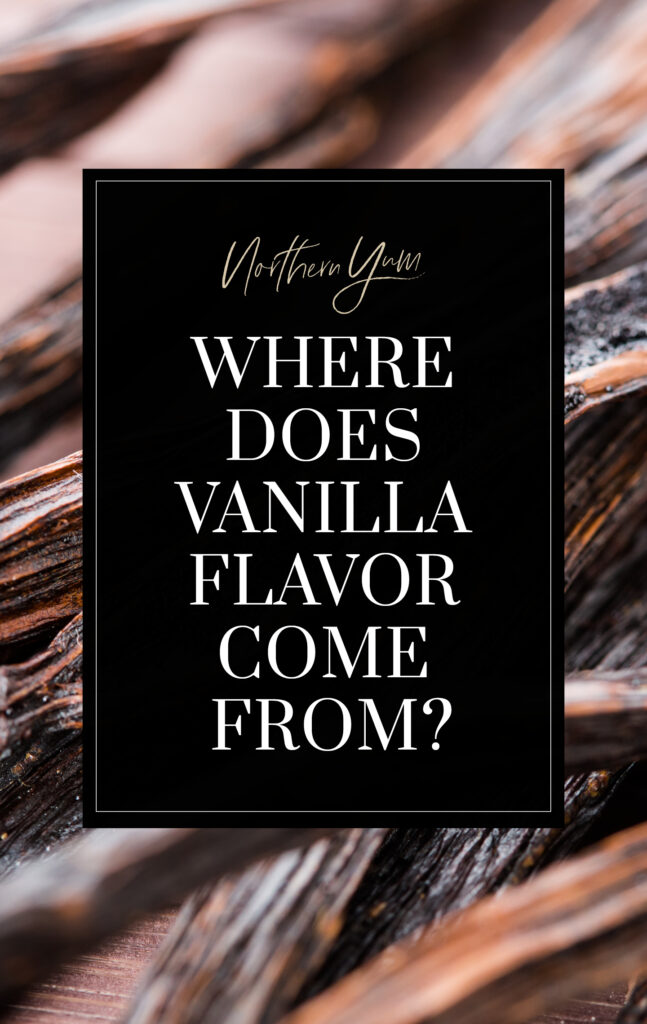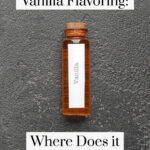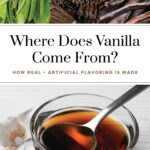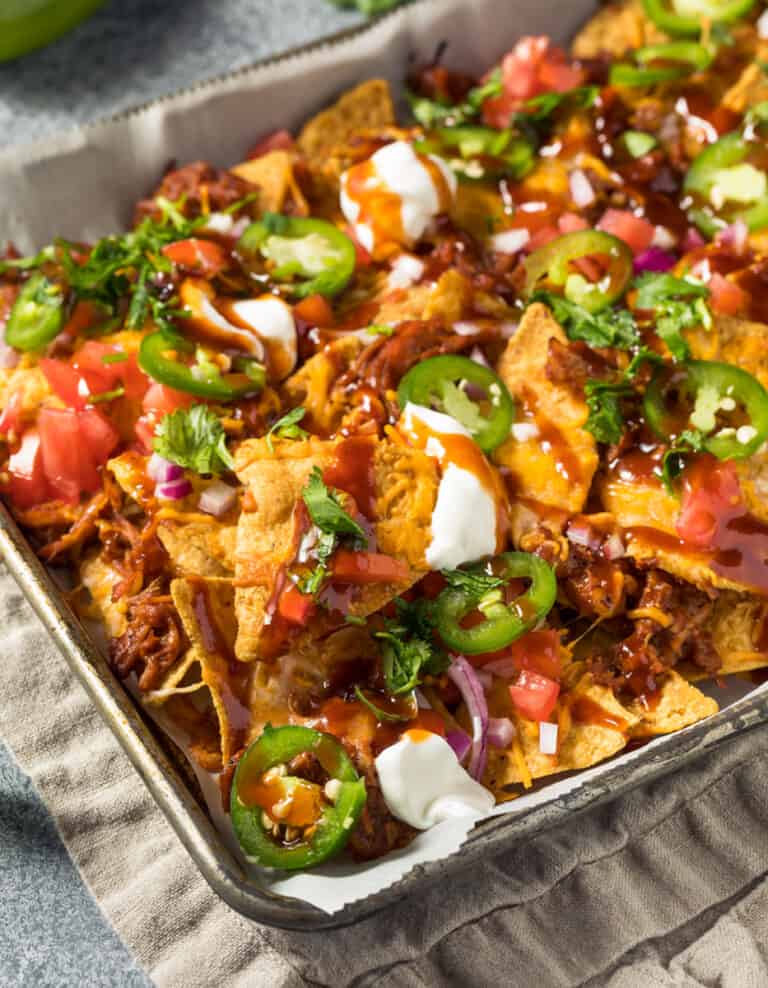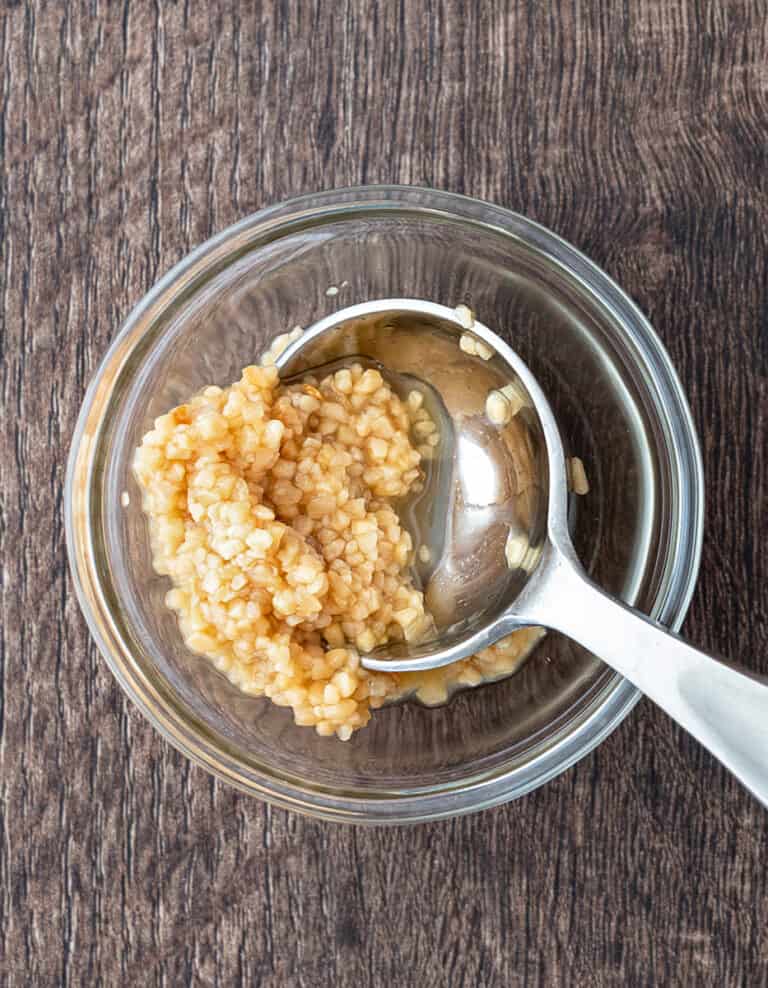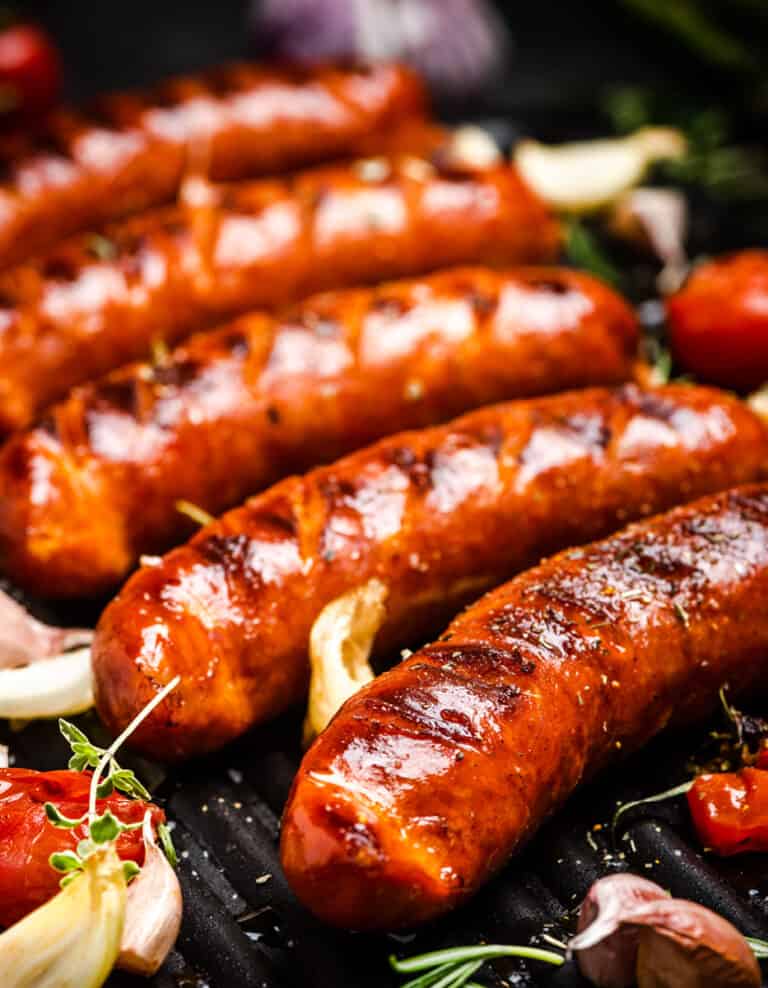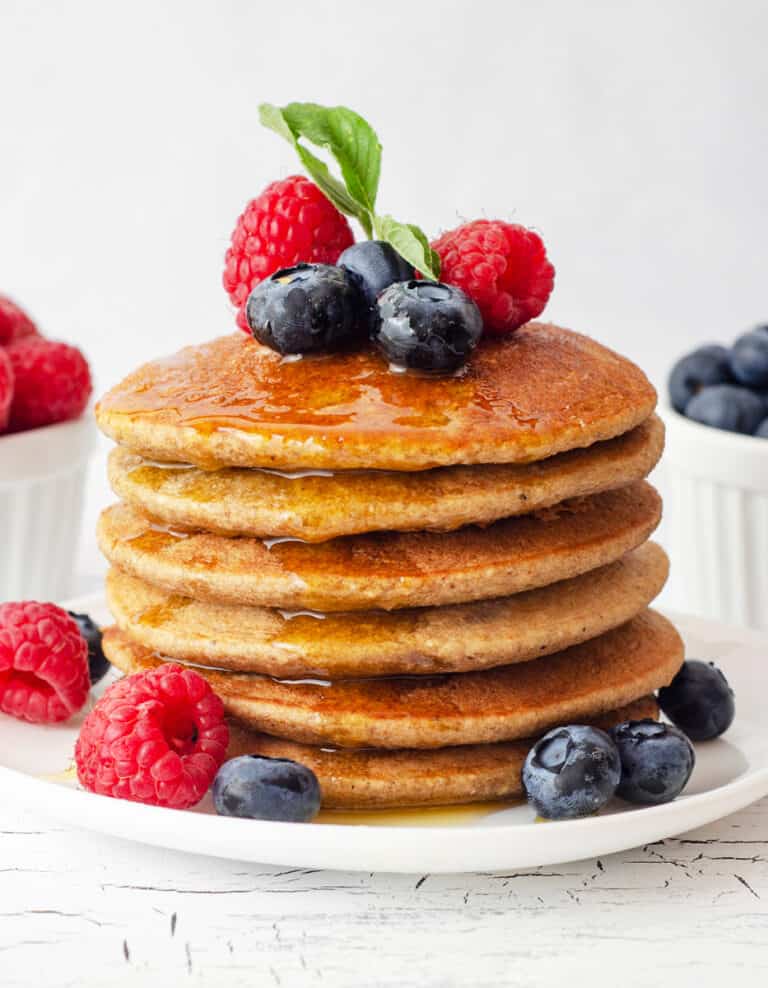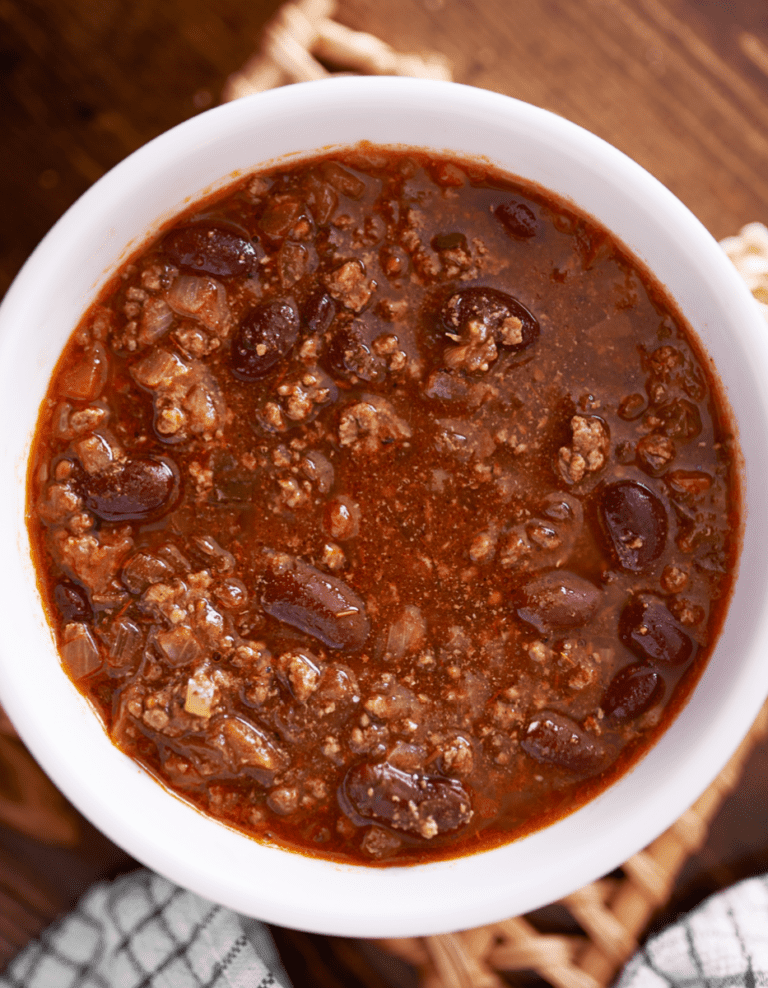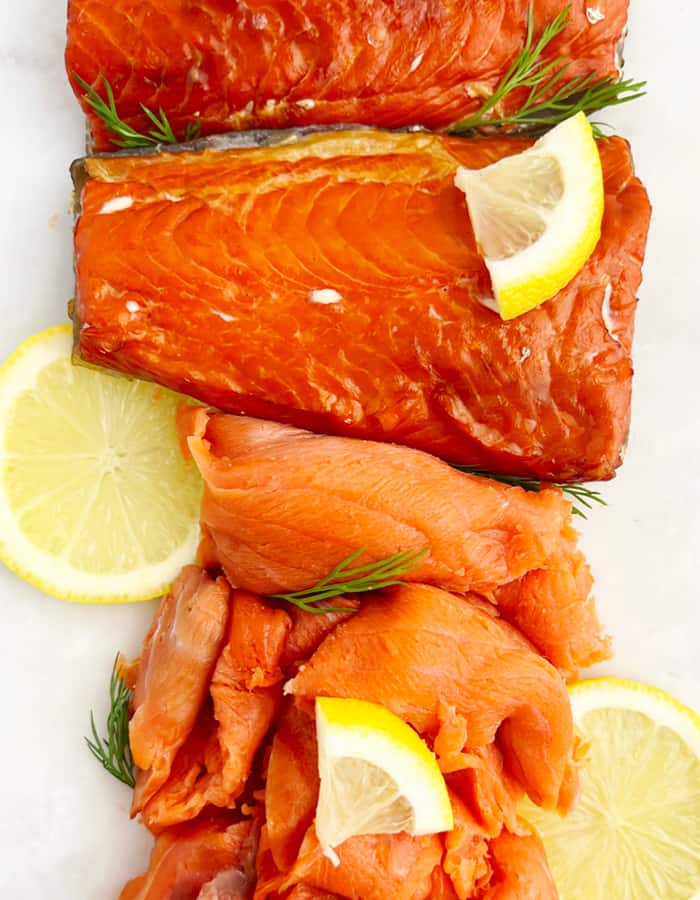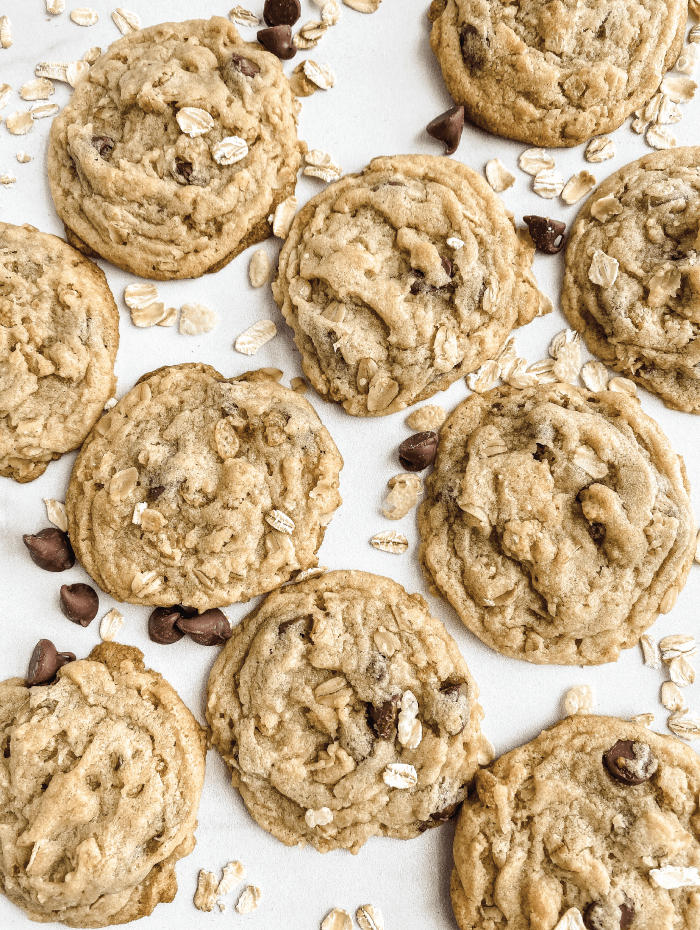Learn all about where vanilla comes from and how it’s made, including real vanilla and artificial vanilla flavoring. Also, how to tell if it’s pure vanilla.
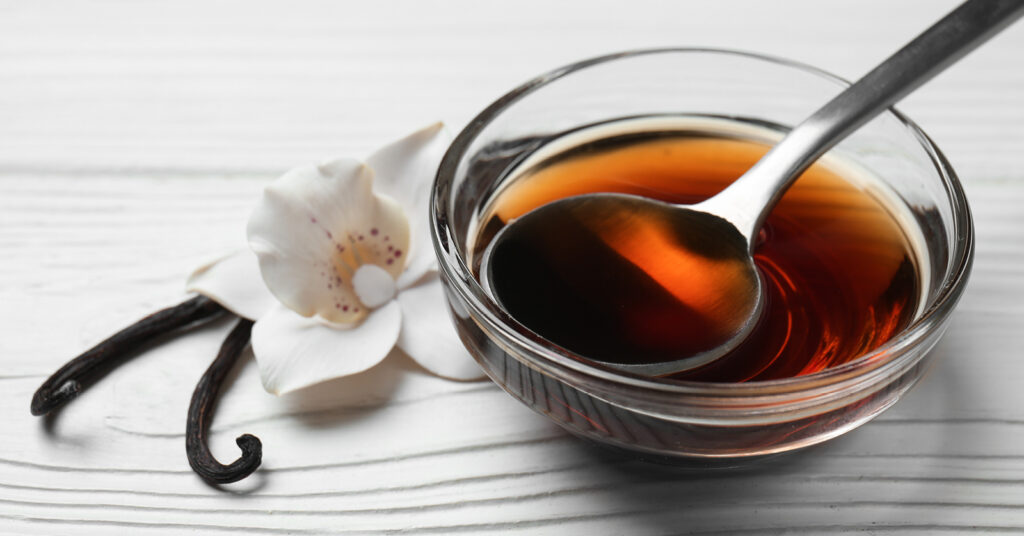
We all love vanilla—whether in ice cream, cookies, cakes, or our coffee creamer. But most people don’t know where vanilla (real or imitation) comes from. Or what’s actually involved in making this popular flavor. Keep reading to find out!
Find What You’re Looking for:
Where Does Real Vanilla Flavor Come From?
The story of real vanilla is so interesting–it all starts with a delicate hand-pollinated flower and produces a crop that’s more expensive than silver by weight. It’s in the top 3 most expensive spices in the world, along with saffron and fennel pollen. Here is a little bit more about the plant itself:
The Vanilla Plant
Vanilla is derived from a vanilla orchid—primarily the Mexican or Bourbon species ‘Vanilla planifolia’—which is a tropical vine native to Mexico. Here are the essential parts of the plant used to make vanilla:
- Vanilla orchid flower: each flower requires manual hand-pollination within 24 hours of opening.
- Vanilla pods or beans: from the flower grows long green ‘beans’ produced by the vanilla orchid plant. The beans are often 6 to 9 inches long.
- Vanilla seeds: seeds inside each pod are used to create the vanilla extract.
The vanilla pods are green (left) when harvested. They are cured and become dark in color (middle). When the beans are sliced lengthwise, you can see the tiny seeds inside of the vanilla bean (right).
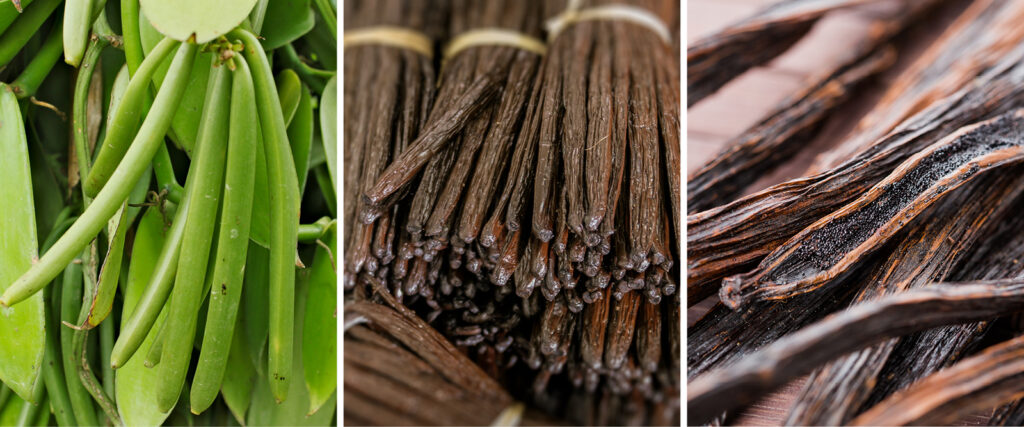
There are three species of vanilla—Mexican or Bourbon vanilla (V. planifolia), Tahiti vanilla (V. tahitensis), and West Indian vanilla (V. pompona). Source: Britanica.com.
Where is Vanilla Grown?
Most vanilla is from Madagascar, Indonesia, Mexico, Papua New Guinea, and China. Madagascar is the world’s leading exporter. This plant, like most orchids, requires a warm tropical climate.
How Vanilla Extract is Made
Vanilla extract is made by macerating (or soaking) vanilla pods in alcohol anywhere from 8 weeks to 24 months. The longer the vanilla is allowed to infuse into the liquid, the more flavorful the extract will be.
Common alcohols used are vodka, rum, bourbon, or brandy, as long as it is at least 35% alcohol. Vodka seems to be the most popular. Vegetable glycerine (food-grade glycerine) is a non-alcoholic alternative for extraction.
Homemade Vanilla Extract
Homemade vanilla extract is really easy to make and so delicious. However, it takes months to marinate, and vanilla beans can be expensive. Here are the simple steps you’ll need to make your own vanilla flavoring:
- Start with several pint mason jars and add 3 vanilla beans cut in half and then slit down the middle lengthwise to each jar.
- Next, fill each mason jar with vodka leaving an inch of space at the top. Seal each jar with a lid.
- Start by shaking the mason jars daily for the first week. Then once per week for the first few months and then once per month for the remaining time.
- Let the vanilla marinate for 18 to 24 months before using. The longer you can infuse it, the deeper the vanilla flavor will be.
Notes:
- Alcohol type: in place of vodka, you can use rum, spiced rum, brandy, or bourbon.
- Marinating time: try your vanilla at 8 weeks, then at 6 months. The longer you go, the deeper flavor you’ll have! (18 to 24 months)
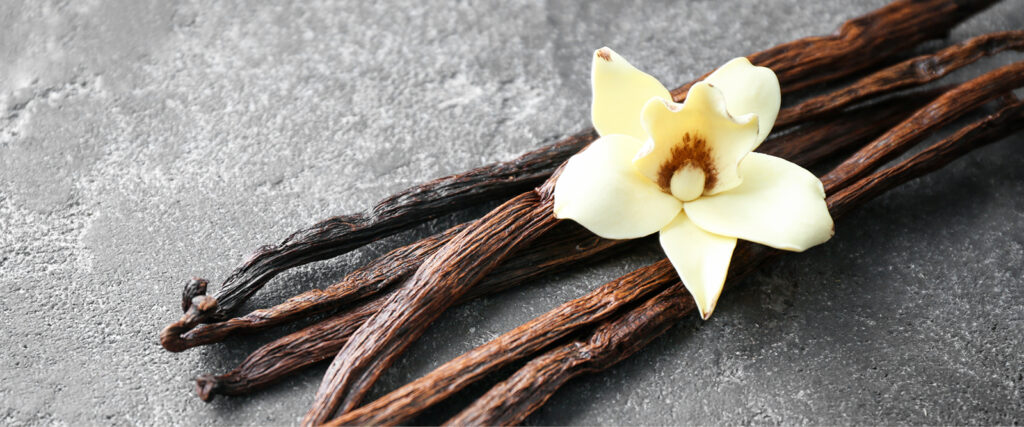
Where Does Natural Vanilla Come From?
Natural vanilla is another term used for real vanilla. According to the FDA, ‘natural’ means that nothing artificial or synthetic has been added to the food – in this case, vanilla. So all of the information above about real vanilla also applies to natural vanilla – with the added clarification that nothing artificial has been added in the process along the way.
Where Does Organic Vanilla Come From?
Organic vanilla is another name you’ll hear when talking about real vanilla. Organic, according to the FDA, means the farming and processing uses only natural substances, and the soil is free from synthetic fertilizers or pesticides for at least three years prior to harvest. So all of the information above about real vanilla also applies to organic vanilla – with the added clarification that nothing synthetic has been used to grow or process it.
What is Artificial Vanilla Flavor Made From?
Many people are surprised to learn that artificial vanilla flavor is made from a variety of different chemicals and additives. In fact, imitation vanilla extract is often made with synthetic vanillin, a lab-created version of the vanillin found in real vanilla. Synthetic vanillin is derived from materials like lignin, a natural compound found in wood, or from guaiacol, created from petrochemicals.
While artificial vanilla extract does not have the same complex flavor as real vanilla extract, it is significantly cheaper to produce. As a result, it is often used as a flavor in baked goods and other processed foods. While some people object to the use of synthetic ingredients in food, the FDA has deemed imitation vanilla extract to be safe for human consumption.
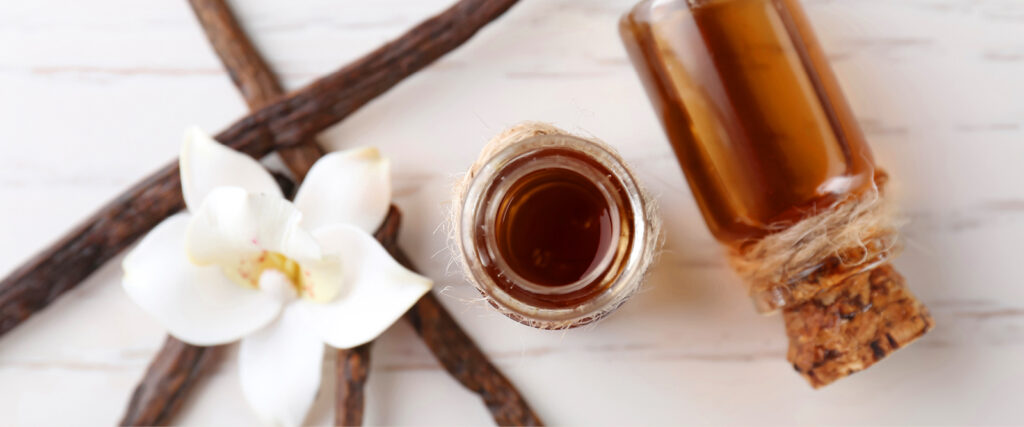
How to Tell If It’s Real Vanilla
So how do you tell the difference between pure and imitation vanilla? Here are a few tips that will help:
- The flavor of true vanilla extract should be rich and concentrated. In contrast, imitation vanilla extract is usually light brown in color and has a more watery consistency. It also lacks the depth of flavor found in pure vanilla extract.
- Remember, clear vanilla will always be artificial. Due to the dark color of cured vanilla beans, real or natural vanilla will always have a brown hue.
- Read the labels. Pure vanilla extract should list only two to three ingredients: alcohol, vanilla beans, and water. Imitation, on the other hand, may list up to 20 ingredients, including artificial colorings and flavorings.
Examples:
- Pure vanilla label: Vanilla Bean Extractives in Water, and Alcohol.
- Imitation vanilla label: Water, Propylene Glycol, Vanillin, Caramel Color, 0.1 Sodium Benzoate (Added as a Preservative), Phosphoric Acid, and Ethyl Vanillin.
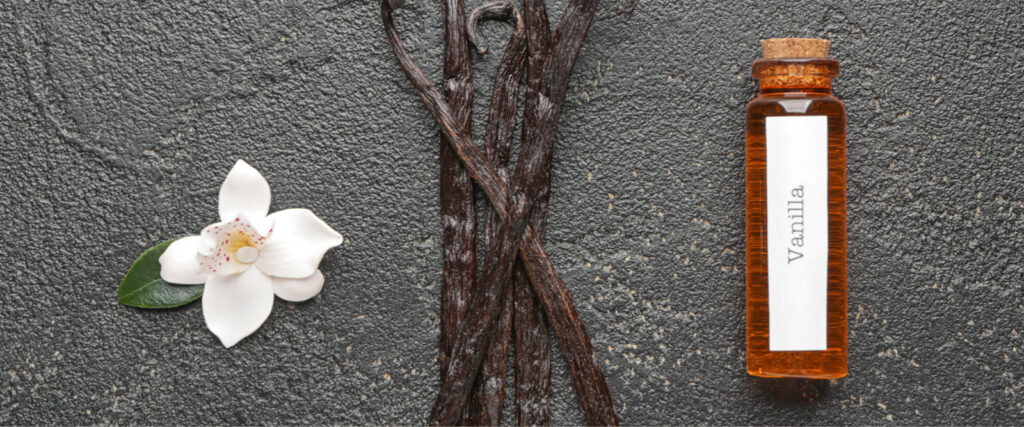
Frequently Asked Questions
Here are common questions about the origins of this delicious flavoring.
Where did vanilla extract originate?
Vanilla is native to South and Central America. The Totonacs of Mexico’s east coast were the first to harvest it. The Aztecs conquered the Totonacs and then began to use vanilla to flavor their chocolate-based drinks. Vanilla was later introduced to Europe by Spanish explorers when they conquered the Aztecs. Today, vanilla is grown in tropical countries all over the world, and it remains one of the most popular flavorings worldwide. Source: NaturalGeographic.com.
Why is vanilla so expensive?
There are a few reasons. First, vanilla is a very labor-intensive crop. The vanilla bean is actually the fruit of a tropical orchid, and the process of hand-pollinating the flowers is extremely tedious. Furthermore, vanilla pods must be hand-picked and then cured for several weeks to months before they are ready to be used. Additionally, vanilla crops can be destroyed by storms (or stolen by thieves), and when supply is limited, prices inevitably go up. So the next time you buy vanilla beans (or vanilla products), remember all the time and effort that goes into growing them.
Where does vanilla come from, beaver butts?
Chances are, if you Google ‘where vanilla comes from,’ you’ll come across information on castoreum which comes from the castor sac scent glands of beavers (near their butts). It’s what beavers use to mark their territories. Apparently, it smells good, similar to vanilla. This substance has been used in many things, even in food. And although we might not ever know because of the label ‘natural flavorings,’ it’s unlikely that it’s in your vanilla.

In Summary
Well, now you know where real and imitation flavoring comes from. And how to tell if your vanilla is real. Which will you choose next time you make cake or cookies?
More Baking Tips
- Cherry peppers: what to make with them
- What is the difference between marinara sauce and pizza sauce?
Pin for later
